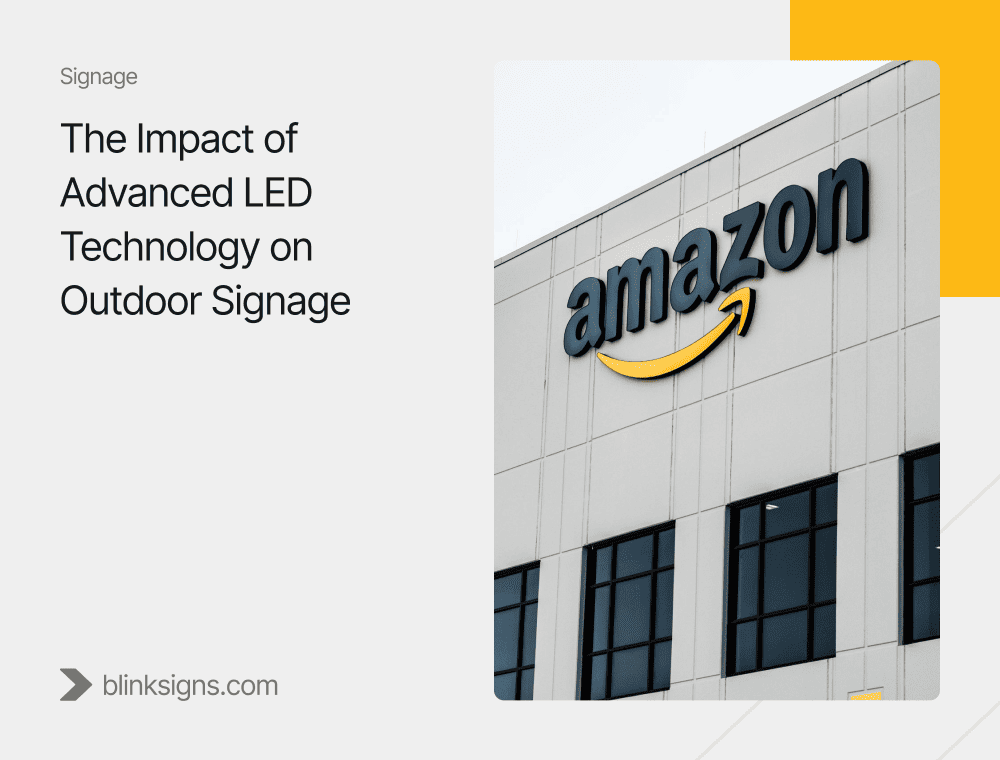
The Impact of Advanced LED Technology on Outdoor Signage
Outdoor signage has long been pivotal in brand visibility, customer engagement, and advertising effectiveness. The rise of advanced LED technology has transformed how businesses communicate with their audiences in outdoor spaces. LED signage has evolved beyond traditional neon and fluorescent options, offering exceptional brightness, energy efficiency, and versatility that drive better customer interaction and brand recall.
Modern LED signage solutions are engineered to withstand harsh environmental conditions, deliver dynamic content, and provide long-lasting durability with minimal maintenance.
At BlinkSigns, we specialize in custom LED signage solutions that enhance brand identity and optimize energy consumption, regulatory compliance, and long-term cost savings. LED technology’s impact on outdoor signage is reshaping how businesses establish their presence, and this guide explores how LED innovations are driving this transformation. From energy efficiency to AI-driven content updates, the future of signage is LED-powered.
Key Technological Advancements in LED Signage
The landscape of LED signage has advanced dramatically in recent years, integrating smart technologies and energy-efficient innovations that enhance performance and impact.
Unlike traditional signage, LED displays provide superior brightness, extended lifespan, and the ability to adapt dynamically to environmental conditions.
Businesses now leverage adaptive brightness control, real-time content updates, and cloud-based management for effortless operation.
These innovations make signage more effective and ensure businesses remain competitive in an increasingly digital world.
Evolution of LED Signage Technology
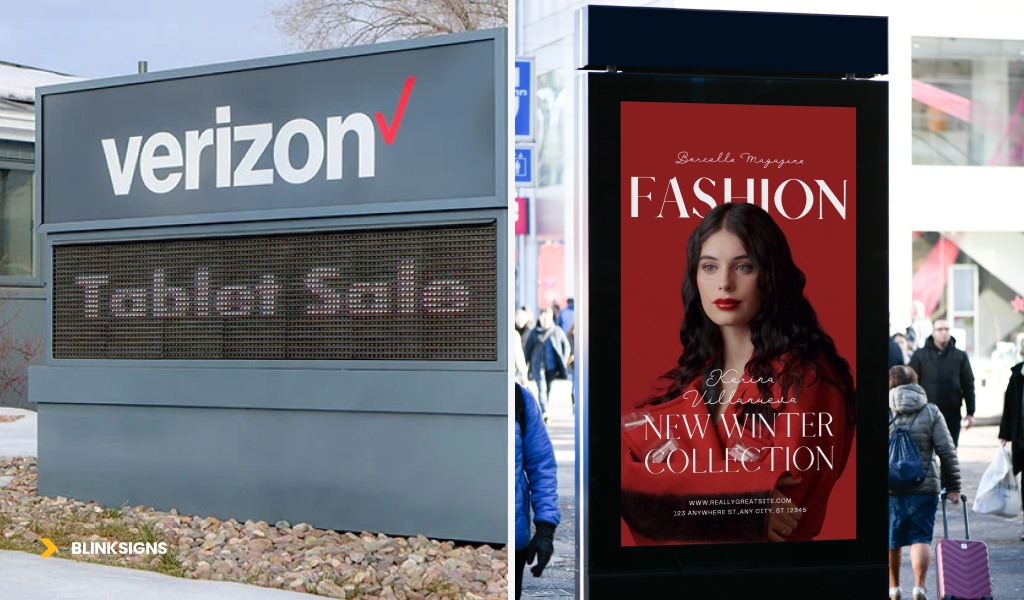
Evolution of LED Signage Technology
| Feature | Traditional Signage | Modern LED Signage |
|---|---|---|
| Lifespan | 30,000 hours | Up to 100,000 hours |
| Energy Consumption | High | Up to 70% lower energy use (Source: U.S. Department of Energy) |
| Brightness Control | Fixed | Adaptive brightness technology |
| Content Flexibility | Static | AI-driven real-time updates |
| Maintenance | Frequent | Minimal maintenance required |
One of the most significant developments is the shift from standard LED displays to AI-driven dynamic content systems. These systems allow businesses to adjust their messaging based on external factors such as time of day, weather conditions, and audience demographics.
Additionally, adaptive brightness technology automatically optimizes LED illumination levels to ensure readability in all lighting conditions while reducing power consumption.
At BlinkSigns, high-resolution SMD and COB LEDs are incorporated to offer enhanced image clarity and reduced pixelation, making signage more visually compelling even from long distances. Leading LED providers like GE Lighting, Samsung, and Cree continually push the boundaries of LED technology, offering increasingly efficient and durable solutions.
The integration of 5G-enabled digital networks has allowed LED signage to be controlled remotely, enabling businesses to update content instantaneously. This level of flexibility is invaluable for brands looking to stay ahead of competitors with dynamic promotions and time-sensitive messaging.
Additionally, motion-sensing LED displays add an interactive element to signage, enhancing engagement and audience participation.
Industry-Specific Applications of LED Signage
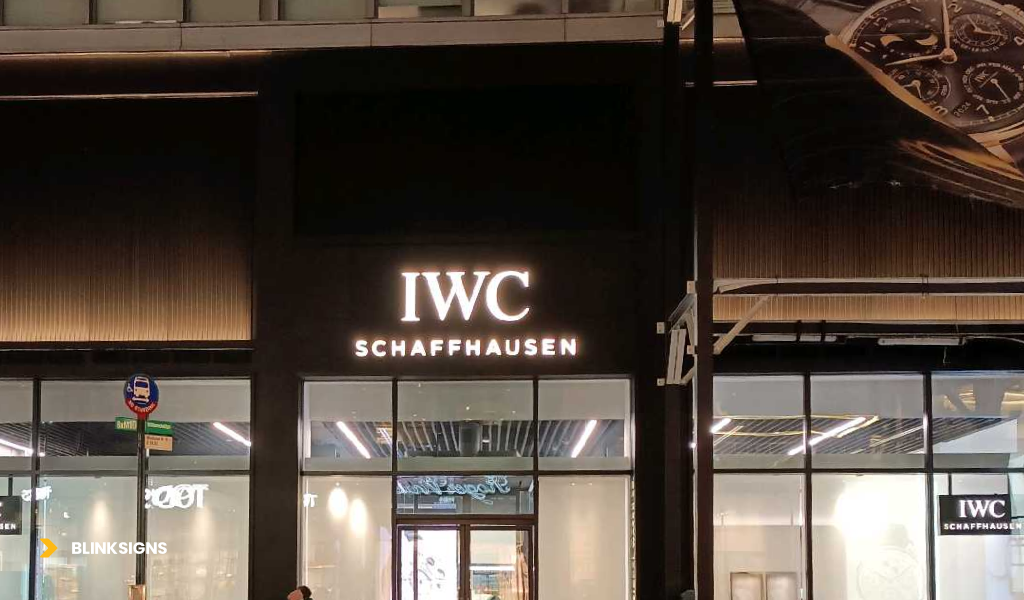
Industry-Specific Applications of LED Signage
The versatility of LED signage makes it a powerful tool across various industries. Each sector utilizes LED technology to maximize impact and engagement, providing businesses with high-visibility, energy-efficient, and interactive signage solutions.
Retail & Corporate Branding with LED Signs
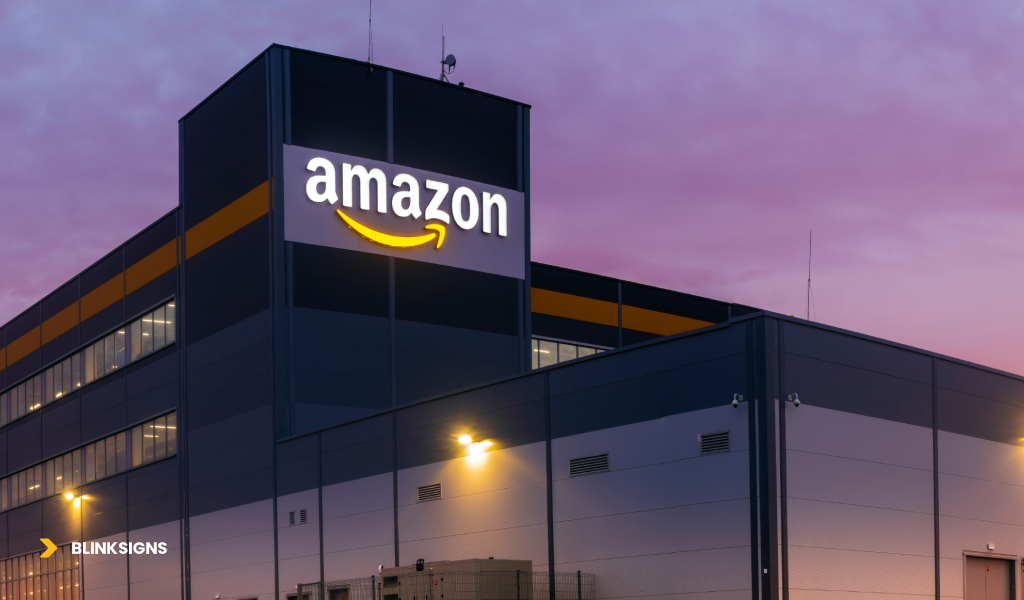
Retail & Corporate Branding with LED Signs
Retailers and corporate brands depend on LED signage to attract foot traffic and reinforce brand identity. Common LED applications include storefront LED channel letters, digital menu boards, and promotional displays. Due to digital displays’ dynamic and engaging nature, businesses that invest in LED technology often experience increased customer dwell time and conversion rates. For example, a fashion retailer could use LED displays to showcase dynamic catwalk videos or highlight current promotions, attracting attention and driving foot traffic.
Hospitality & Entertainment Venues
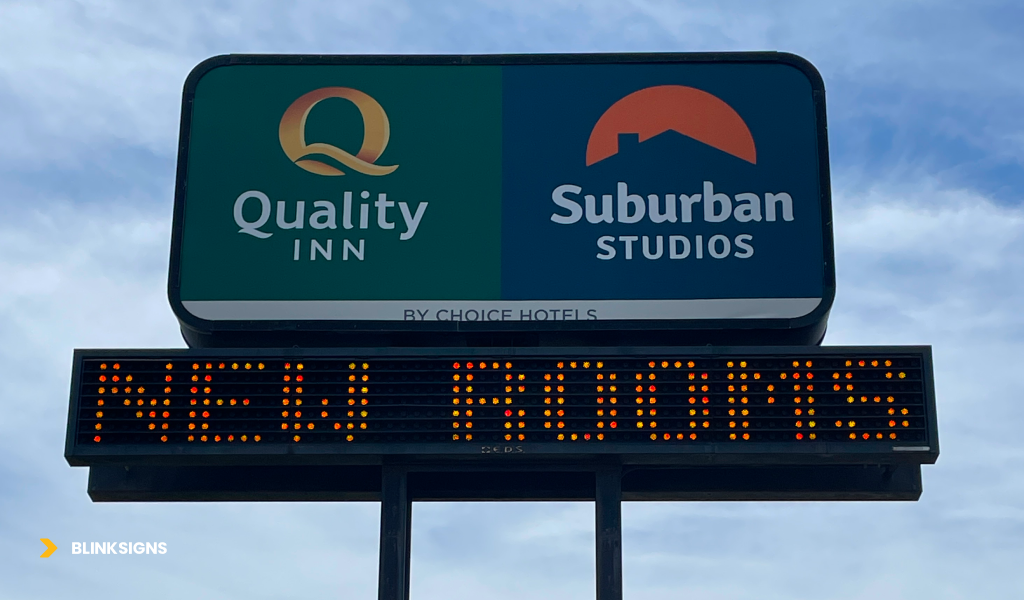
Hospitality & Entertainment Venues
Casinos, hotels, and concert venues benefit from high-resolution LED screens to showcase promotions, events, and advertisements. Stadiums and event venues use LED displays to provide real-time updates, advertisements, and live replays, creating an immersive audience experience. The adaptability of LED signage ensures that businesses in the entertainment sector can update marketing campaigns on demand. Imagine a hotel using an LED video wall in its lobby to display stunning visuals of local attractions, creating an immersive experience for guests.
Public Infrastructure & Smart Cities
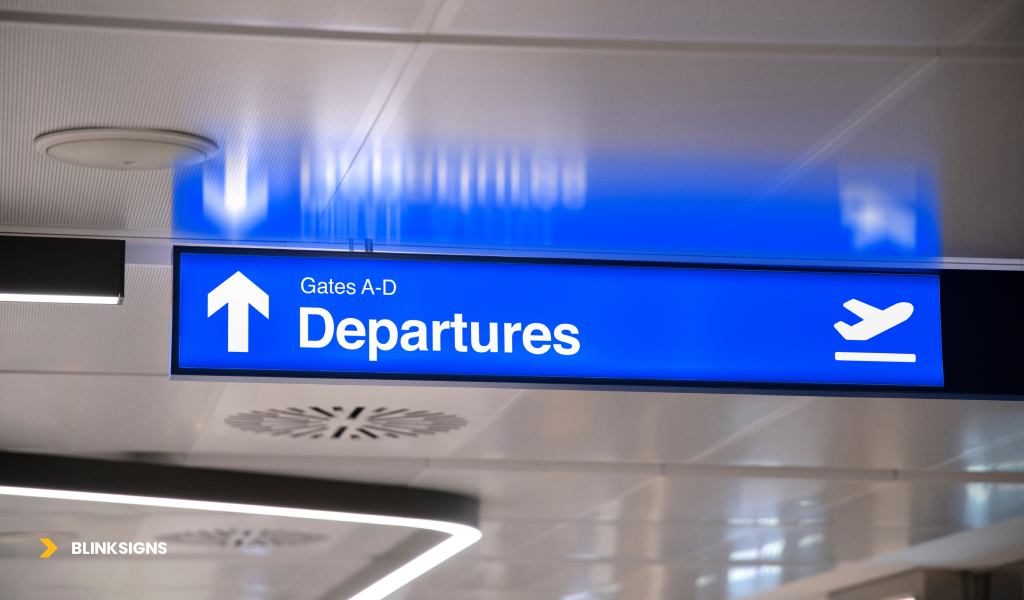
Public Infrastructure & Smart Cities
Public transportation hubs such as airports, train stations, and bus terminals incorporate LED-based wayfinding signs to assist travelers. Cities are now integrating smart LED signage into their urban landscapes for traffic updates, public service announcements, and emergency notifications. These systems ensure that critical information is conveyed clearly and efficiently, improving public safety and accessibility. Cities like London and New York have already implemented smart LED signage systems for real-time traffic updates and emergency alerts, improving public safety and traffic flow.
The Business Case for LED Signage: ROI & Cost Benefits
The advantages of LED signage extend beyond visibility—it is a strategic investment that improves profitability, reduces costs, and strengthens customer engagement.
- Energy Efficiency: LED signage consumes up to 70% less power than neon and fluorescent signs, leading to lower operational costs.
- Extended Lifespan: High-quality LED displays last up to 100,000 hours, minimizing maintenance and replacement expenses.
- Customer Engagement & Conversion: Studies reveal that high-resolution LED displays increase customer engagement by 40% compared to static signage (Source: Nielsen). Research by the FedEx Office showed that 76% of consumers had entered a store they had never visited before based on its signage.
- Remote Content Management: Businesses can update messaging in real-time using cloud-based LED signage solutions, ensuring that promotions remain relevant and effective.
Regulatory & Compliance Considerations for LED Signage
When installing LED signage, it is essential to ensure compliance with municipal zoning regulations and ADA accessibility standards. Many cities have restrictions on brightness levels, display duration, and placement, requiring businesses to obtain proper permits before installation.
ADA Compliance & Accessibility
- High-contrast visuals improve readability for visually impaired individuals.
- Glare-reduction technology enhances display clarity in different lighting conditions.
- Voice-activated LED kiosks provide accessibility for all users.
At BlinkSigns, we handle the permitting process and ensure that all installations align with local regulations, maximizing the effectiveness of LED signage while remaining fully compliant.
Sustainability & The Future of Advanced LED Technology
Sustainability is becoming a key factor in LED signage development. To reduce environmental impact, businesses are turning to solar-powered LED billboards, recyclable LED panels, and energy-efficient modular designs. Coca-Cola has piloted solar-powered LED billboards in several countries, significantly reducing their reliance on grid electricity.
The future of LED signage also includes:
- AI-powered smart displays that adjust content based on audience behavior.
- Augmented reality (AR) LED signage for immersive consumer engagement.
- Cloud-integrated LED networks that allow for real-time content updates.
BlinkSigns remains at the forefront of these advancements, offering eco-friendly and future-proof signage solutions that support business sustainability goals.
Expert Tips for Maximizing LED Signage Impact
- Use High-Contrast Colors: Use a color contrast analyzer tool to ensure your signage meets accessibility standards (WCAG).
- Optimize Placement: Conduct a visibility study to determine the optimal height and angle for your LED signage to maximize its reach.
- Update Content Regularly: Rotate promotional messages to maintain customer interest.
- Leverage Motion & Animation: Adding subtle movement to LED displays increases attention and engagement.
- Ensure Compliance: Adhering to zoning laws and accessibility regulations prevents legal issues.
Transform Your Outdoor Signage with BlinkSigns
Integrating advanced LED technology in outdoor signage is more than just an upgrade—it is a game-changer for businesses seeking to enhance visibility, engagement, and sustainability. With a focus on energy efficiency, compliance, and dynamic content, LED signage reshapes how brands interact with their audience.
At BlinkSigns, we provide cutting-edge LED signage solutions that align with your business needs. Whether you want to install new LED displays, upgrade existing signage, or explore eco-friendly alternatives, our team is here to help.
Schedule a free consultation with BlinkSigns to discuss your LED signage needs and receive a personalized quote!